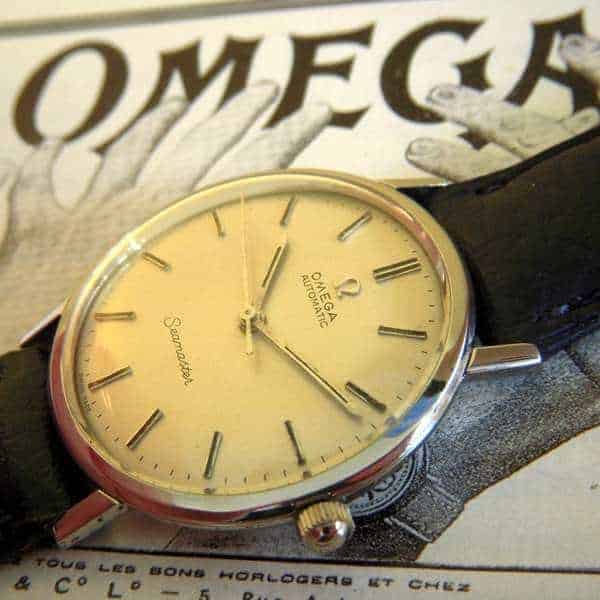In this modern time, punctuality has become a great asset for an individual. Whether for professionals or students, being on time is a must in this modern age. In the professional world, being punctual is a big thing. Applying or seeking employment will make a big difference when you come on time compared to coming in late for an interview. Of course, this will only be possible if you have an accurate timepiece to provide you with the exact time.

What is the history of Omega Watches?
Omega watches came from La Chaux de Fonds, Switzerland. It all started in a small workshop of Louis Brandt in 1848. Brandt was 23 when he began this venture, which eventually became Omega. Today, there are Omega watches for sale, both in physical and online stores.
Brandt was passionate. He valued precision and dedicated his time to creating the most accurate watches. Later on, his high-quality watches became known in Switzerland, which eventually spread throughout Europe.
In 1879, Louis Brandt passed away. His two sons, Louis Paul and Cesar, stepped in and took care of the family business in their father’s stead. They also took after their father’s dedicated passion for watchmaking and precision. Hence, it was not surprising that a few years later, they changed the watchmaking industry forever.
In 1880, the company moved to a new home. Five years later, the brothers introduced their first series-produced calibre with the name the Labrador. It boasts of several technological advances. This became a basis for future innovations.
Inspired by the Labrador’s success, in 1892, the brothers went on to produce the first minute-repeating wristwatch. This one of a kind timepiece has a highly complex calibre that chimes the hours and minutes. It is a miniature version of the existing pocket watch movements.
In 1894, Omega came to be. With their continued success, the brothers launched an extremely accurate watch with every component available for replacement without needing to modify it by a watchmaker.
The Omega Venture
The Brandt brothers named this new venture Omega. It signified their ultimate achievement. It didn’t escape their notice that precision and series-produced movements were what appeared to be the future of watchmaking. And they were not wrong. The company’s reputation reached worldwide and not only in Europe. The movement was too successful that eventually, the brothers decided to change the company’s name to Omega.
In 1895, the Omega brand finally had its symbol. In 1900, Omega acquired the Grand Prize at the 1900 Universal Exposition located in Paris. It was a tremendous honor a brand could receive. The Grand Prize recognized the Omega collection. It recognized the technology behind the Omega collection with it outdoing the others in the industry.
In 1905, Omega served as an official timekeeper for several sporting events both in Switzerland and abroad. Omega became the first choice for event organizers due to its reputation and dedication to precision and accuracy.
Omega: Gordon Bennett Cup
In the year 1909, Omega timed the Gordon Bennett Cup. The event is prestigious. It is a dangerous balloon race where an international field of competitors attempts to outfly the others all over Europe. In the same year, the demand for the Omega watches increased. As a response to meet the global demand, Omega broadened its distribution that included the six continents. People worldwide want to have an Omega watch for it not only exudes accuracy, but it is also easily repairable.
In 1925, to maintain its name as a design pioneer, Omega introduced exceptional timepieces at the place where Art Deco began.
In 1931, the master watchmakers got rewarded when in the six trials at the Geneva Observatory, Omega set precision records. Even today, the brand’s reputation remains. In the same year, Omega produced its first automatic movement using two weights. This new design allows the winding of the movement in both directions, significantly affecting its winding efficiency. In the following year, Omega timed an entire Olympic Game, being the first watchmaker. From then on, Omega became the official timekeeper for almost all Olympic Events. During these happenings, Omega was able to present technological breakthroughs.
Succeeding Success
During the same year, 1932, Omega launched the first commercial diver’s watch. They named it the Marine. The Marine is a success with its double case sealed with a cork, keeping the water out and other elements. It also has an adjustable clasp that allows the users to fit the watch at their comfort. The watch underwent several tests, which lasted for five years. The conclusion came out that the watch was indeed waterproof.
In 1936, Omega set a world precision record of 97.8 points out of the perfect score of 100. A 47.7 mm Omega calibre set the record. It has undergone an adjustment done by Alfred Jaccard. Together with its certification, this record is available at the Omega Museum located in the company’s hometown.
Present Omega
Omega continued to produce unique timepieces in the following years. The watches became more popular as actors in a few movies wore them in the film. Some of which dates back to the ’90s, which continued in the 2000s. One example is the Casino Royale. The main character, 007, wore the Seamaster Diver 300 and the Seamaster Planet Ocean 600M Co-Axial chronometer.
Conclusion
Up until today, Omega maintains its reputation for precision and accuracy. Hence, it is perfect to have in this modern age and time. Additionally, its style and design are suitable to mix and match with your fashion style.

